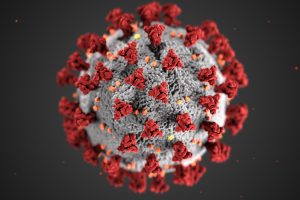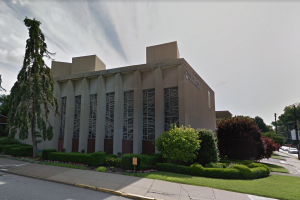The World Health Organization has warned that the current outbreak of cholera in Yemen is spreading with unprecedented speed.
On Friday, May 19, WHO estimated more than 240 people have died from cholera in the last three weeks, out of a total of 23,400 people infected. Yemen’s public health ministry says the disease has spread to 18 of 22 governorates.
Just a week earlier, Yemen’s health ministry put the number of dead at 115, and the suspected number of cases at 8,595 in the same period. That number was nearly four times more than the 2,300 cases reported on May 9.
Cholera in Yemen now 20'000 suspected cases & 223 dead. If rains again, situation will unravel. ICRC Charter plane w/ drugs next week. pic.twitter.com/KT2Ez71dLR
— Alexandre Faite (@afaiteICRC) May 20, 2017
“I have to admit that when I see the data that I saw this morning, not officially released; are really taking us by surprise. The speed of the resurgence of the cholera epidemic is unprecedented,” UN News quoted Dr. Nevio Zagaria, WHO representative in Yemen, as saying on Friday.
Zagaria warned there could be 300,000 cholera cases within six months.
Dwindling medical capacity
WHO explained that the current cholera outbreak can be traced back to one in October.
Cases of the disease spiked in December and then dissipated but never fully went away, and Yemen’s capacity for dealing with a disease like cholera has been ravaged by more than two years of war.
Public hospitals, including those run by charities like Médecins Sans Frontières (also known as Doctors Without Borders) have been hit and destroyed by Saudi coalition airstrikes. MSF says it clearly identifies hospitals and routinely shares the GPS coordinates of several medical facilities with the Saudi-led coalition, sometimes days before they were hit.
When its hospital in the Hayden district of Saada was hit in October 2015, MSF told Grasswire it received no warning before a pair of airstrikes destroyed the building. Staff and patients inside the hospital managed to escape after the first strike, while the second “flattened the facility.”
MSF said its logo was on the hospital’s roof and the coordinates, which reveal it to be near the Yemen-Saudi border, were known to the coalition.
.@MSF teams in #Yemen are still receiving & treating a growing number of cholera & acute watery diarrhoea patients pic.twitter.com/m1mV29O9d5
— أطباء بلا حدود-اليمن (@msf_yemen) May 14, 2017
Sara Tesorieri, the Norwegian Refugee Council’s Yemen advocacy advisor, told Grasswire that the lack of medical services, coupled with a lack of clean water, has allowed the disease to spread exponentially.
She noted that the reported deaths and infections represent a minimum, as the conflict has also crippled data collection. Districts with ongoing fighting aren’t even reporting cholera cases.
“Generally, cholera is a preventable and treatable disease, but the mortality rate over the past weeks is higher than it should be due to lack of services.
Where health facilities and clean water is lacking, cases are more common and recovery less assured. People who are already in a weakened state – including from hunger – are less capable of fighting off the disease.”
Sara Tesorieri, NRC advocacy advisor for Yemen
In March, UNICEF representative Dr Meritxell Relaño said levels of acute malnutrition are the highest in Yemen’s recent history.
The World Bank estimates that 60 percent of the Yemeni population – about 17 million people – are currently food insecure. The UN considers 24 percent of the population to be emergency cases, and another 10.2 million people to be in a food crisis.
NRC Secretary-General Jan Egeland said on May 3 that the World Food Programme will only be able to feed 3 million of the 7 million people most in need this month.
Egeland warned that seven million people in Yemen are at risk of an entirely man-made famine. Following a five-day visit to the country, Egeland said commercial food imports have reached an all-time low, driving the price of basic commodities to rise by a third on average.
Humanitarian aid pledges and blockade
On May 14, officials in the Houthi-held capital Sana’a declared a state of emergency in response to the cholera outbreak.
“The number of casualties surpassed the normal rates, exceeding the capacity of the health system, which has become unable to contain this unprecedented health and environmental disaster.”
Health ministry statement
Tesorieri said other cities may follow suit, and state authorities may be less able to respond to the current outbreak than the one in October.
The WHO estimates more than 7 million people in Yemen are at risk of cholera, and Tesorieri said the response requires funding of around $22 million, of which approximately 22 percent has been received.
She said the overall humanitarian response plan to help people with the most urgent needs requires $2.1 billion. As of May, only 18 percent of that plan has been funded.

A UN pledging conference on April 25 raised $1.1 billion in humanitarian aid funding for Yemen. UN Secretary-General Antonio Guterres said at the conference that he was hopeful the rest of the $2.1 billion appeal will be pledged by the end of the year.
But Guterres, as well as charities such as the International Committee of the Red Cross, also called for more to be done to facilitate the delivery of aid, medical supplies and food to people in need in Yemen.
Yemen imports about 90 percent of its food, about 70 percent through the port at Hudaydah, which the Saudi coalition has periodically blockaded since August 2015.
Last month, the UN issued a warning about the port following remarks from Yemeni Prime Minister Ahmed Obeid bin Daghr. On May 1, he said arms trafficking has continued at Hudaydah and threatens both Yemen and Saudi Arabia.
In response to concerns the Saudi coalition could attack the port, the UN republished an April 25 statement from seven international humanitarian organizations that warned the loss of Hudaydah would be devastating for Yemen.
“There is no current viable alternative to Hudaydah port. Yemen’s main commercial importers of food have stated that they do not know how they would deliver food if Yemen’s Red Sea ports were lost.”
Joint statement from Action Against Hunger, Médecins du Monde, Norwegian Relief Council, Saferworld, Save the Children, Tearfund and War Child
An attack on Hudaydah would likely block the nearby Al-Saleef port, the NGOs explained, and the remaining ports at Aden and Mukala do not have the capacity or infrastructure necessary to meet Yemen’s food import needs. Attempting to convoy supplies overland from Saudi Arabia or Oman would force aid workers to cross the frontlines of the conflict.
If there's an attack on Hudaydah port +it goes up in flames the main lifeline for millions will be cut https://t.co/02Y3J71UXL @NRC_egeland
— Hayley Davidson (@hayleyljordan) May 4, 2017
Tesorieri told Grasswire that stocks currently in country are reportedly adequate for the first phase of the cholera response, but the humanitarian community has been warned to expect additional delays over the coming weeks.
She said the coalition is still controlling access to Hudaydah, but the port remains operational.
She urged the re-opening of Yemen’s airspace to allow commercial flights to land at Sana’a airport “for movement of critical goods and those that require sensitive handling and swift movement, including many medicines.”
Unending weapons supplies
WHO’s statement came just hours before US President Donald Trump took off for Saudi Arabia, the first stop on his first international trip since taking office in January.
Upon landing in Saudi Arabia on Saturday, one of the first things Trump did was witness a deal between US defense contractor Raytheon and the Saudi Arabia Military Industries Company.
In a ceremony attended by Trump and Saudi King Salman bin Abdulaziz Al Saud, Raytheon and SAMI signed a memorandum of understanding on a new partnership.
Raytheon Arabia will be a “Saudi legal entity wholly-owned by Raytheon” based in Riyadh. The new company, as explained by Raytheon, “will focus on implementing programs to create indigenous defense, aerospace, and security capabilities in the Kingdom.”
Riyadh, which has been seeking to diversify its economy away from petroleum, announced the launch of SAMI on Thursday.
Great to be in Riyadh, Saudi Arabia. Looking forward to the afternoon and evening ahead. #POTUSAbroad pic.twitter.com/JJOra0KfyR
— Donald J. Trump (@realDonaldTrump) May 20, 2017
In July, Raytheon vice president for integrated air and missile defense Ralph Acaba boasted about the company’s Patriot anti-missile system, which he said a “100 percent success rate” in intercepting missile attacks from Yemeni rebels.
Raytheon precision-guided bombs, sold to the Saudi coalition by the United States and United Kingdom, have been linked to possible war crimes in Yemen.
Saudi Arabia’s Deputy Crown Prince Mohammed bin Salman said on May 3 that a long war in Yemen is in the interest of Saudi Arabia because the Saudi-led coalition has strong financing and a steady arms supply.
Fighting between President Abd Rabbuh Manusr Hadi’s forces and Houthi rebels allied with fighters loyal to former president Ali Abdullah Saleh escalated in 2015, prompting Riyadh to intervene on Hadi’s behalf.
The offensive has displaced 2.8 million people and killed or injured more than 13,000 civilians. The UN estimates Saudi airstrikes are responsible for about 60 percent of civilian deaths in Yemen.
Nearly the entire population of Yemen has been affected by the conflict: about half of its 26.8 million people live in areas directly affected by war, and more than 21.1 million people need humanitarian assistance.
In March, at least 31 people died when a boat carrying Somali refugees was attacked off Yemen’s Red Sea coast. Mohamed al-Alay, a coastguard in the Hudaydah area, said the refugees, who were carrying UNHCR documents, were travelling from Yemen to Sudan when their boat was attacked by an Apache helicopter, the Guardian reported.
Saudi Arabia operates US-built Apache A-64 Longbow attack helicopters.

On Saturday afternoon, Trump and Secretary of State Rex Tillerson attended a signing ceremony for a $110 billion weapons deal with Saudi Arabia.
A White House official said the package, which includes defense equipment and services, will support the kingdom and Gulf region’s long-term security “in the face of Iranian threats,” and bolster Riyadh’s ability to concentrate on counterterrorism operations in the region.
“This package demonstrates, in the clearest terms possible, the United States’ commitment to our partnership with Saudi Arabia and our Gulf partners, while also expanding opportunities for American companies in the region, and supporting tens of thousands of new jobs in the US defense industrial base.”
White House official on the US-Saudi arms deal
White House deputy spokesperson Sarah Huckabee Sanders said the documents signed Saturday would include defense cooperation agreements, a joint vision statement and private sector agreements.
The US-Saudi deal is worth a total of $350 billion over 10 years with $110 effective immediately, according to Sanders.
On May 18, The New York Times reported that Trump’s son-in-law, Jared Kushner, who also acts as a top White House advisor, secured the $110 billion deal with Saudi officials in Washington this month by personally asking Lockheed Martin CEO Marilyn Hewson to cut the asking price on the company’s Terminal High Altitude Area Defense system.
In a press release, the US State Department said the package includes the THAAD and Patriot missile systems, helicopters, Multi-Mission Surface Combatant Ships, tanks, cyber equipment and intelligence-gathering aircraft.
Some of the weapons in the 10-year deal were approved by the Obama administration, according to the reports. The United States sold about $115 billion in arms to Saudi Arabia during President Barack Obama’s eight years in office.
But the Obama administration also halted sales of precision-guided munitions to Saudi Arabia for fear they would be used on civilians in Yemen. The Trump package will include those weapons, according to The New Times.




